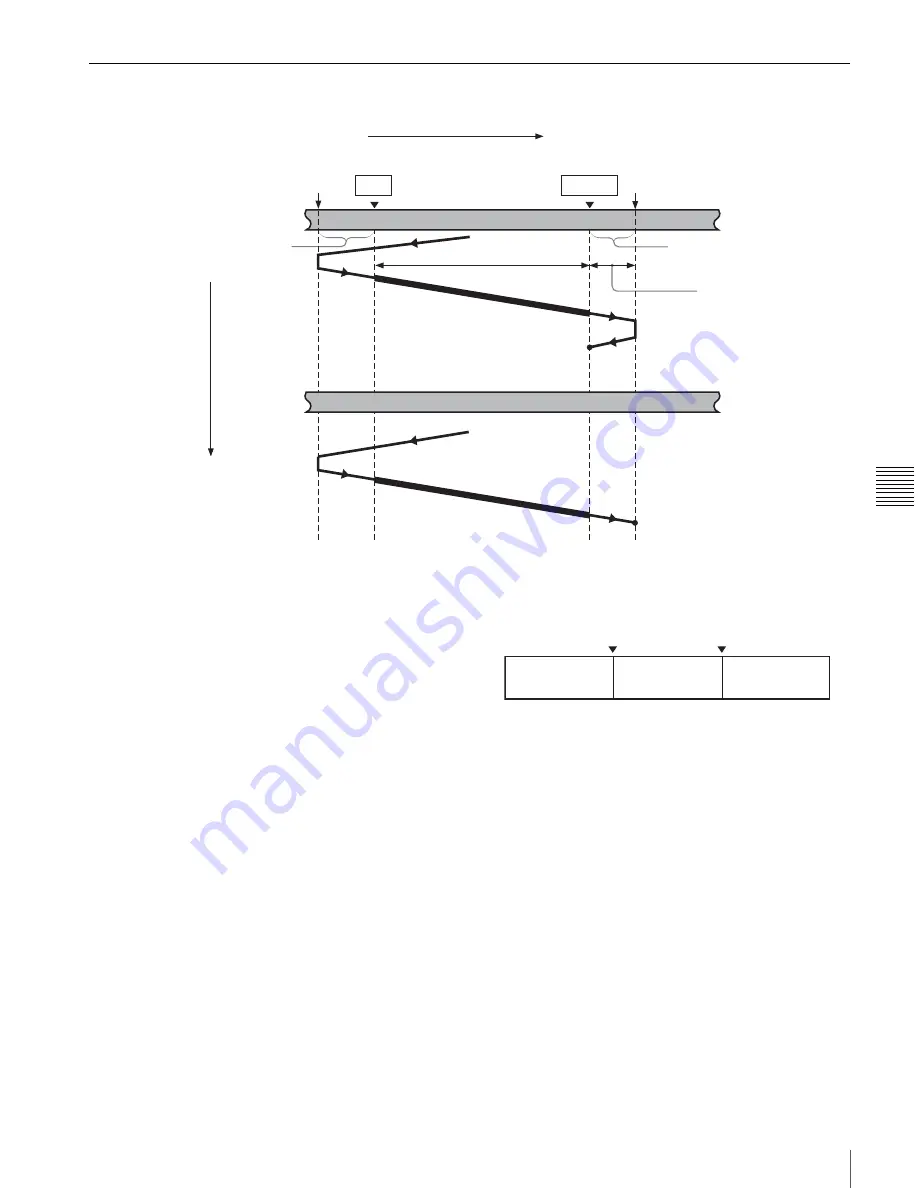
49
5-1 Automatic Editing
Chap
te
r 5
E
d
it
in
g
5-1-8 Carrying Out Automatic Editing
Overview
When you carry out automatic editing, the recorder and
player operate as shown in the figure above, to record the
video and audio signals between the IN and OUT points on
the player to the segment between the IN and OUT points
on the recorder.
Monitor output
Like in the preview, duing an automatic editing, you can
monitor the video and audio signals as follows on a
monitor connected to the recorder.
• From the preroll point to the IN point, you can monitor
the playback image from the recorder.
• From the IN point to the OUT point, you can monitor the
playback image from the player through the recorder in
E-E mode.
• From the OUT point to the postroll point, you can
monitor the playback image from the recorder.
The following figure illustrates the descriptions above.
To monitor with a single monitor for video
and audio on both player and recorder
You can edit efficiently even if only one monitor is
available, by using the following procedure.
1
Connect the monitor to the recorder.
2
In the basic setup menu, set menu item 008 to
“AUTO”.
3
Select the player (PLAYER) using F6 (R/P SEL) in
function menu page P06: EDIT on the recorder side.
This makes the recorder forcibly enter the E-E mode,
and the player video and audio signals are output to the
monitor.
Tape transport
Recorder
Preroll point
Recording overlap
(in case of assemble
editing)
IN point
OUT point
Postroll point
Preroll
Edit segment
Postroll
Stop
Player
Time flow
Stop
Playback
IN point
OUT point
Playback
(recorder)
E-E mode
(player)
Playback
(recorder)






























